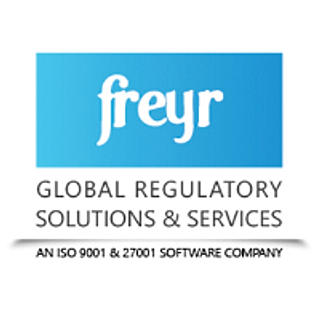EU Detergents Regulation Compliance: Household Cleaning
- Freyr Global Regulatory Solutions
- Mar 10
- 2 min read
Adhering to the EU Detergents Regulation (EC No. 648/2004) is vital for guaranteeing the safety, transparency, and eco-friendliness of household cleaning products sold within the European Union. Compliance with this regulation is critical for legally marketing products, ensuring Cleaning Products Compliance, and maintaining consumer confidence. Below are the essential steps manufacturers should take to grasp how to meet the EU Detergents Regulation requirements and remain compliant. 1. Biodegradability standards for detergents according to EU legislation One primary requirement of the regulation is Biodegradable Surfactants— the key active agents in detergents for Detergent Compliance EU. These substances must decompose by at least 60% when exposed to oxygen within a 28-day period. Certain scenarios may necessitate further testing, especially if the product is intended for industrial or professional applications. 2. Selection of Safe Ingredients The regulation enforces restrictions on specific ingredients, particularly those that could threaten human health or the environment. For example, phosphates and phosphonates face significant limitations in consumer laundry and dishwasher products. A Safety Assessment must be conducted for each ingredient to safeguard both consumers and the environment from potential risks. 3. Labeling requirements for household cleaning products in the EU Clear and informative labeling is a critical requirement outlined in the regulation. Each detergent product must include the following for Accurate Labeling and Consumer Information: A full list of ingredients to keep consumers informed. Dosage instructions to minimize waste and ensure safe usage. Allergen information, especially for allergens present at levels over 0.01%. Hazard symbols and Precautionary statements must align with the CLP Regulation (EC No. 1272/2008). Labels must clearly indicate products containing enzymes, optical brighteners, or disinfectants. 4. Safety Data Sheets (SDS) for Hazardous Substances If a detergent is classified as hazardous under the CLP Regulation, SDS must be provided to professional users and distributors. The Safety Data Sheet details hazards, safe handling practices, storage requirements, and emergency procedures. 5. Online Ingredient Transparency Manufacturers are also required to provide a comprehensive ingredient list on their websites. This list should feature either INCI names (International Nomenclature of Cosmetic Ingredients) or commonly accepted chemical names. 6. Adherence to Related EU Regulations Beyond the Detergents Regulation, products must also comply with: REACH Regulation for chemical safety assessments Biocidal Products Regulation (BPR) for disinfectants Packaging and Packaging Waste Regulation (PPWR) for sustainable packaging Conclusion Manufacturers can easily grasp how to comply with the EU Detergents Regulation by ensuring factors such as biodegradability, ingredient safety, clear labeling, and appropriate documentation. Businesses seeking expert assistance can turn to Freyr, which provides regulatory support for formulation reviews, dossier preparation, label and EU Ecolabel compliance, facilitating seamless market entry. |







Comments